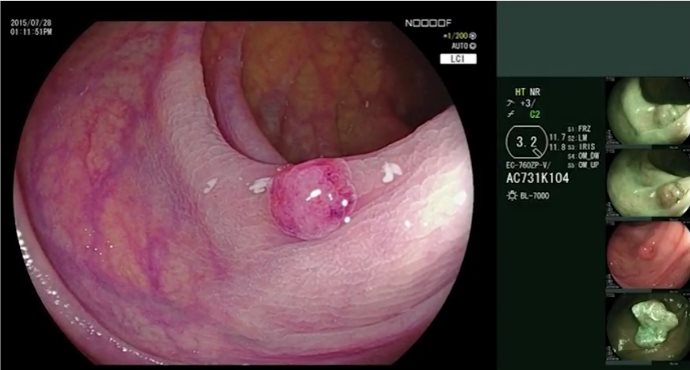Polyp Classification: WASP (incl. SSA)
Gastroenterologische Schwerpunktspraxis Dornstadt
The quality of colonoscopy examinations has been constantly increasing, mainly thanks to technological improvements in image resolution and contrast. This has meant that more and more (usually flat) polyps are being discovered, particularly in the right colon. The precise classification of these lesions into hyperplastic polyps or sessile serrated adenomas (SSAs) is extremely important, both for endoscopic resection and for setting the intervals for check-up examinations.
However, the macroscopic and microscopic diagnosis of this type of lesion is still difficult. For endoscopic assessment, the Kudo and NBI International Colorectal Endoscopic (NICE) classifications have so far been available. On the basis of these findings and in view of the increasing availability of narrow-band imaging (NBI), a Dutch group – the Workgroup on serrAted polypS and Polyposis (WASP) – has recently developed a proposed classification (also called WASP) for distinguishing between hyperplastic and adenomatous/serrated colorectal polyps. It is based on the NICE classification, which distinguishes between hyperplastic and adenomatous polyps but does not have a category for serrated lesions.
Serrated lesions have now been added in the WASP classification, although it too has its limitations. It can be used for better classification of findings that are difficult to differentiate. However, due to the morphological variety of the polyps concerned, individual findings may remain unclear even when the WASP classification is used. The following gallery of images is intended to present the newly evaluated characteristics in the WASP classification, but it also illustrates the problems that still persist in distinguishing the lesions from hyperplastic polyps.
For example, the criterion “dark spots inside crypts” may appear to be more reliable than the criterion of “irregular shape.” The classification also lacks a criterion otherwise commonly used in practice, the detection of a “mucus cap.” Despite this, it represents an initial step forward and draws attention to important endoscopic characteristics of polyps in everyday diagnostic work. Ultimately, however, until further notice snare resection will still have to be carried out when there are unclear lesions, particularly in the right colon. The value of differential diagnosis based purely on imaging is currently still an open question.
Figure 1
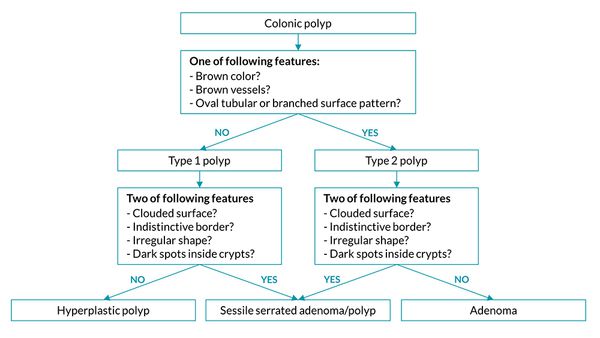
The WASP classification (from Ijspeert JE et al., Gut 2016;65:963–70, doi: 10.1136/gutjnl-2014-308411. Epub 2015 Mar 9).
Figure 2
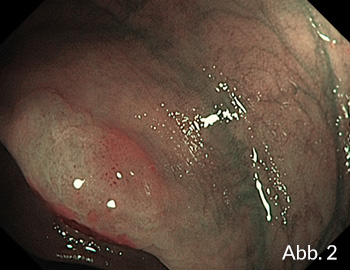
NICE 1 polyp. Clouded surface, distinct border, irregular shape, sporadic crypts with dark spots. The lesion thus has three positive WASP criteria. Histology confirmed the finding of a sessile serrated adenoma.
Figure 3
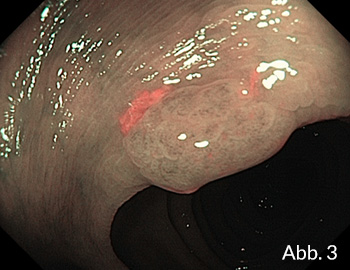
NICE 1 polyp. Clouded surface, distinct border, regular shape, crypts with dark spots. The lesion thus has two positive WASP criteria. Histology confirmed the finding of a sessile serrated adenoma.
Figure 4
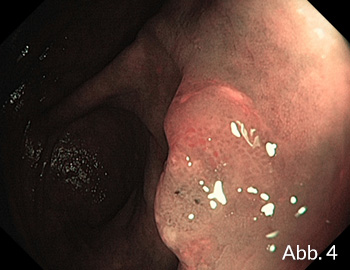
NICE 1 polyp. Smooth surface, indistinct border, irregular shape, crypts with dark spots. The lesion thus has three positive WASP criteria. Histology confirmed the finding of a sessile serrated adenoma.
Figure 5
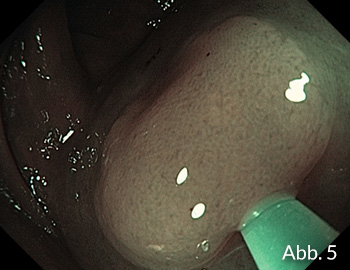
NICE 1 polyp. Smooth surface, distinct border, regular shape, crypts without dark spots. The lesion thus has no positive criteria. Histology confirmed the finding of a hyperplastic polyp (10 mm in size).
Figure 6
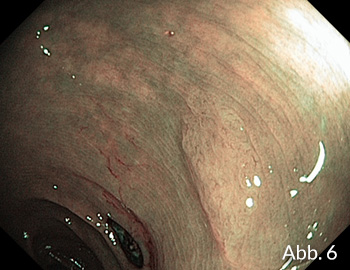
NICE 1 polyp. Clouded surface, distinct border, irregular shape, no crypts with dark spots. The lesion thus has two positive criteria. Histology showed a hyperplastic polyp, despite the lesion meeting the WASP criteria.
Figure 7
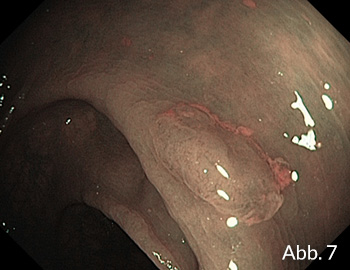
NICE 1 polyp. Clouded surface, indistinct border, regular shape, no crypts with dark spots. Formally, the WASP criteria (with two positive criteria) were met here as well. However, histology reported only hyperplasia.

